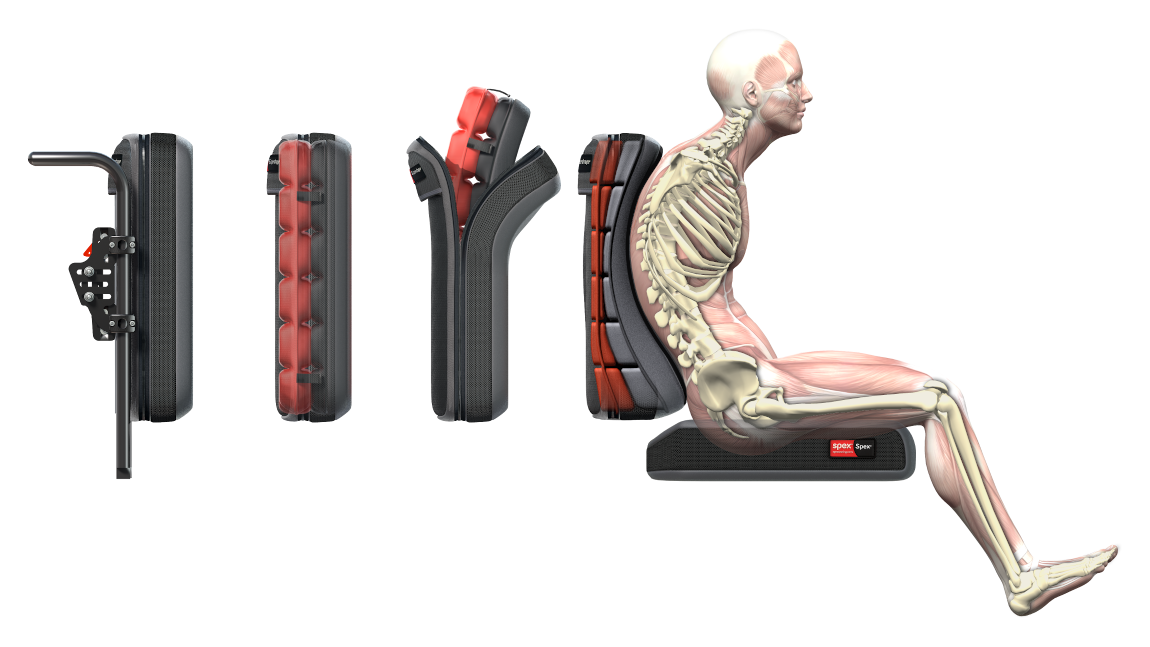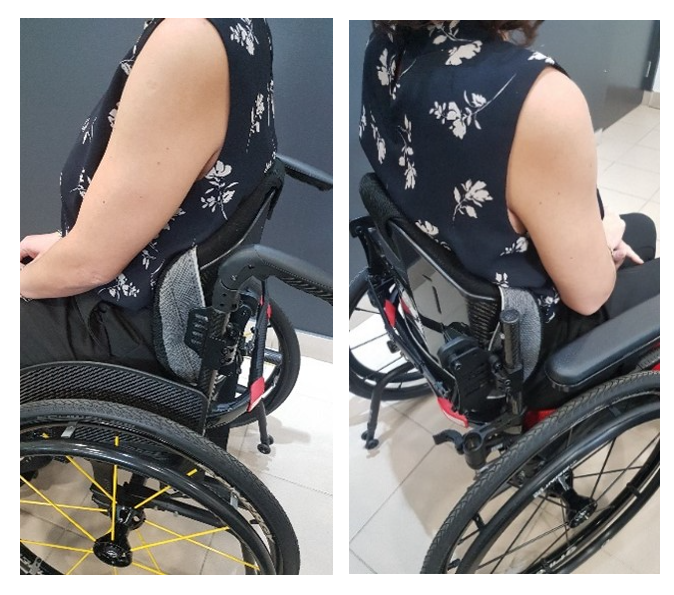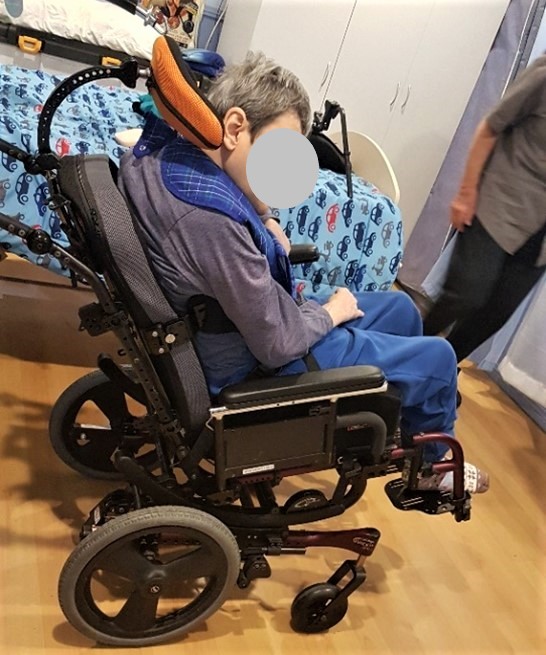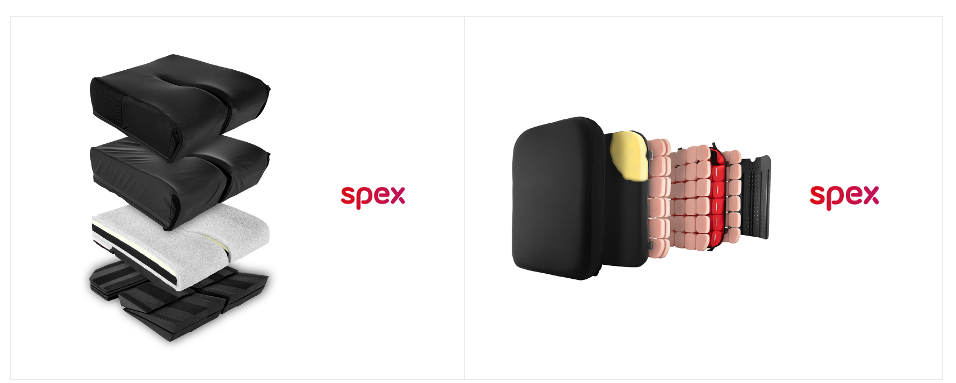Backrests for Moderate to High Needs

While cushions are typically supportive of the pelvis, support and stability of the trunk needs to be given equal care and consideration.
written by
Venesha Moodley
Astris PME Clinical Educator
(B.OT, Postgrad Cert in Clinical Rehab)
Depending on the selected type of backrest used, the degree of support offered will differ. While the standard sling upholstery and tension upholstery backrests are lightweight, cost effective and permits ease of folding a wheelchair, it lacks comfort, does not offer stability to the seated posture, and consequently contributes to greater difficulty in the user self-propelling their wheelchair.
The need for higher levels of support and stability as compared to the prior options is typically offered by rigid backrests consisting of a squab on a rigid shell. The combination of materials, contouring and available features of the attaching bracketry will differ and requires exploration to match the user’s preference for comfort, stability and to facilitate and/or promote function.
Modular backrests typically offer more intimate contact with the skeletal contours of the user’s body. The contact surface should closely match the body contours, particularly in the presence of severe orthopaedic postural deformities, thus preventing pressure areas over bony prominences.
Working toward a stable seated posture requires focus on the pelvis, obtained from a biomechanical assessment and anthropometric measurements, prior to managing the choice and set-up of the backrest. Here are basic considerations when selecting backrests to meet the needs of the user:
• The more active the user, the lower the backrest height - at which height will the user achieve optimal propulsion of the wheelchair?
• Less active users may benefit from a slightly open seat to back angle to prevent the trunk falling forward following the impact of gravity.
• The less balance the user presents with, the more lateral support may be required – either built within the backrest shape or laterals separate to the backrest.
• Does the backrest shape or options for adjustment permit changes in the backrest to match the spinal curves of the user’s posterior trunk?
• Is the level of pressure relief available in the material build of the backrest suited to the user’s pressure relief needs?
• Weight of the backrest and how this affects the overall weight of the mobility and seating system.
• Ease of attachment and detachment of the backrest for ease of portability.
Let’s talk about…
Kyphosis refers to the excessive outward curvature of the spine, causing an exaggerated forward rounding of the back and a forward head position. Postural kyphosis is the most common form, which may be attributed to weak trunk extensors.
A flexible kyphosis is managed by applying opposing forces of the backrest against the posterior trunk of the user at approximately 90º to 95º. This assists with maintaining an upright posture while seated, provided the pelvis is stablised.
In the photo below, we can see a rigid backrest mounted onto a self-propelling wheelchair. The pelvic cut out supports the PSIS of pelvis and the lower back in extension while the backrest contour the slopes back to match the thoracic spine of the user and clears the scapular for movement.

Thoracic kyphosis can progress with ageing due to decreased muscle mass, muscle strength, changes in the spine and bone mineral density changes in the spine. Thoracic hyperkyphosis is described as an excessive antero-posterior curvature of the thoracic spine of greater than 40˚.
The elderly may experience kyphosis or hyperkyphosis after years of sitting in poor posture. Once pelvic stability is achieved, an open seat to back angle together with changes in the modular set-up of the backrest squab may be implemented to permit accommodation. This involves absorbing the apex of the kyphosis into the backrest squab. It is therefore essential to ensure that the backrest squab is of the appropriate thickness to provide even pressure distribution to all areas of the posterior trunk. You may choose to use a wheelchair with a tilt feature to achieve antigravity resting postures to assist with trunk extension.
Mr P in the photo below experienced forward sliding in his wheelchair and old seating. The trial of the Spex backrest and Spex Flex cushion provided the stability and comfort to the pelvis and kyphotic spine while seated in his wheelchair. The tilt feature provided increased contact with his backrest and relief from the effects of gravity acting on the upright seated posture.

Primary reported difficulty included upper trunk falling forward with reduced eye contact with others. Trial of the Spex backrest and Spex Flex cushion permitted improved symmetry and alignment of the seated posture.
The lower back was supported in extension while the mid to upper back was supported in an open angle. Foam cubes were removed from the mid to upper section of the back to accommodate a partially flexible kyphosis, with consequent reduced trunk flexion and improvements in respiration and digestion.


